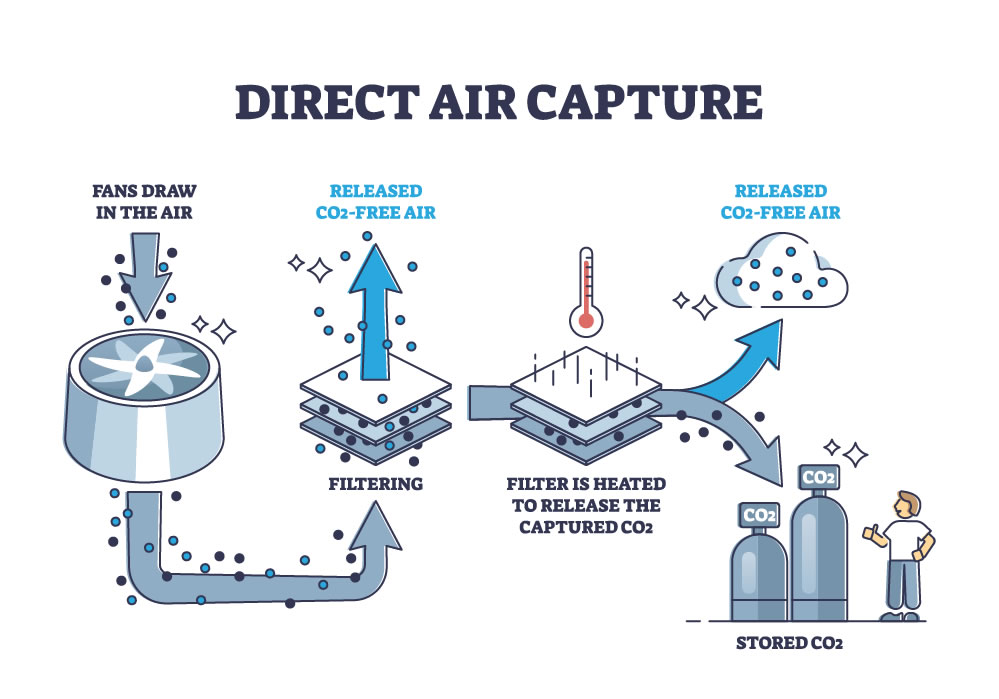Direct Air Capture As A Crucial Tool for Achieving Climate Goals
19
In 2023, global carbon dioxide emissions exceeded 37 billion metric tons, setting a new record. As a result, the concept of removing CO2 from the atmosphere has gained significant traction. Governments worldwide are increasingly investing in direct air capture (DAC) technology to meet climate targets and mitigate the worst effects of climate change.

How Direct Air Capture Works
One prevalent method of DAC involves the use of air contactors as large fans that draw air into chambers containing a basic liquid solution. Since CO2 is acidic, it reacts with the basic solution, forming either carbonate (a primary component of concrete) or bicarbonate (found in baking soda).
The Intergovernmental Panel on Climate Change (IPCC) states that carbon dioxide removal is essential to achieve global and national net zero CO2 and greenhouse gas emission targets. Currently, over 20 DAC plants operate worldwide, with an additional 130 under construction.
Understanding Direct Air Capture
Direct air capture (DAC) technology extracts CO2 directly from the atmosphere, unlike traditional carbon capture, which typically occurs at emission sources like steel plants. The captured CO2 can be stored permanently in deep geological formations or utilised in various applications. If the CO2 is securely sequestered (a process known as direct air carbon capture and sequestration or DACCS), DAC functions as a "negative emissions technology" (NET), effectively removing CO2 from the atmosphere.
Challenges of Direct Air Capture
Capturing CO2 from the air is notably more expensive than other forms of carbon capture due to the lower concentration of CO2 in the atmosphere compared to sources like power station flue gas. This results in higher energy demands and costs for DAC. While reducing greenhouse gas emissions remains a priority, achieving climate goals will also necessitate carbon dioxide removal (CDR) through technologies like DAC. Compared to other leading CDR methods, such as reforestation, DAC requires less land per tonne of CO2 removed, making it a viable option for large-scale deployment. Protea’s atmosFIR FTIR gas analyser has proven a valuable tool in research into the effective storage of Carbon Dioxide (CO2).
#protea #emissions #monitoring #cems #ftir #gas #analysers #shipping #marine #carbon #capture
Other Articles
Global Underground CO2 Storage Data Offers Hope Amid Rising Emissions
01
IMO Postpones Adoption Of Global Net-Zero Shipping Framework
04
Pioneering Carbon Capture Projects Ready For Construction
03
Methanol & Ammonia Deemed Ready As Zero-Emission Shipping Fuels
01
Carbon Capture Storage Reaching A Turning Point In Decarbonisation
13
CCS To Capture 15% Of Shipboard Carbon Emissions By 2050
29
Global Shipping Industry Struggles To Navigate Net Zero Transition
21
Carbon Capture Surges as Economics Policy & Industry Demand Align
14
GHG Emissions At Ports On The Rise Despite Initiatives
07
Carbon Capture Utilisation & Storage In A Nutshell
30
